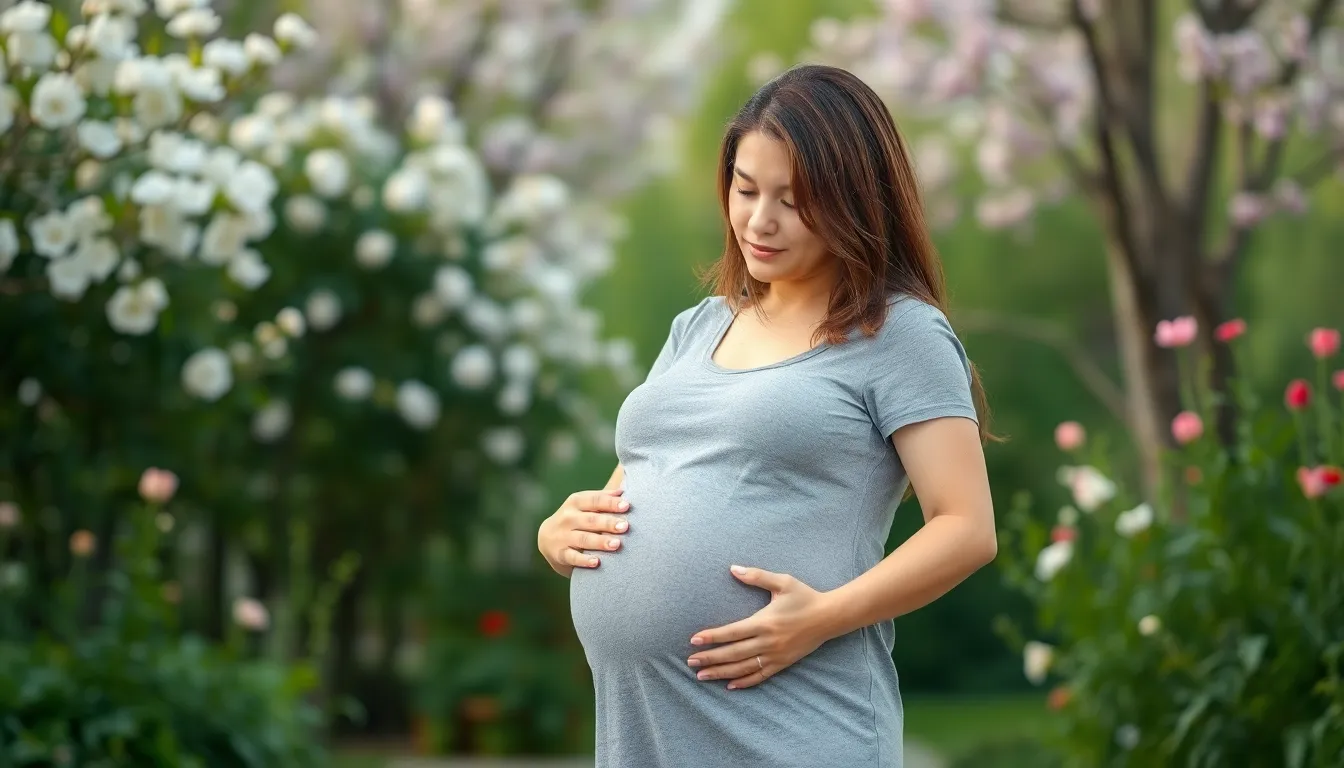Table of Contents
ToggleBraxton Hicks contractions, often referred to as “practice contractions,” play a crucial role in preparing the body for labor. Expecting parents frequently wonder when these contractions begin and what they feel like. Understanding the timing and nature of Braxton Hicks can help alleviate concerns as pregnancy progresses.
Typically, these contractions start in the second trimester, around 20 weeks, but some women may experience them earlier. While they can be uncomfortable, they are usually irregular and not a sign of impending labor. Knowing what to expect can empower expectant mothers and help them differentiate between Braxton Hicks and true labor contractions.
Understanding Braxton Hicks Contractions
Braxton Hicks contractions, commonly referred to as “practice contractions,” serve as the body’s way of preparing for labor. Recognizing their characteristics helps expectant mothers differentiate between them and actual labor.
Definition of Braxton Hicks
Braxton Hicks contractions are intermittent contractions that occur as the uterus begins to prepare for labor. These contractions typically start around 20 weeks of pregnancy, though some women may experience them earlier. They often feel like a tightening sensation in the abdomen and can last for 30 seconds to 2 minutes. Frequency and intensity vary, and they often become more noticeable as pregnancy progresses.
Difference Between Braxton Hicks and Real Labor
Identifying the difference between Braxton Hicks contractions and real labor contractions is crucial for expectant mothers.
- Regularity: Braxton Hicks tend to be sporadic and irregular, occurring infrequently throughout the day. In contrast, true labor contractions occur at regular intervals, increasing in frequency over time.
- Intensity: Braxton Hicks contractions are usually mild and do not intensify. Real labor contractions escalate in intensity and are often accompanied by additional symptoms, such as back pain or pelvic pressure.
- Duration: While Braxton Hicks contractions last from 30 seconds to 2 minutes, true labor contractions typically last longer, around 30 to 90 seconds.
- Effects on Activity: Braxton Hicks contractions often diminish with movement or changes in position, while true labor contractions persist regardless of activity level.
Understanding these distinctions aids in managing expectations as labor approaches.
When Does Braxton Hicks Start?

Braxton Hicks contractions usually begin around 20 weeks during the second trimester. Some women might experience them earlier, as each pregnancy is unique.
Typical Onset Timeline
- 20 weeks: Most women start feeling Braxton Hicks contractions.
- Second trimester: Contractions may become more noticeable as the uterus expands.
- Third trimester: These contractions often increase in frequency and intensity as the body prepares for labor.
Factors Influencing the Start Time
- Individual differences: Each woman’s body reacts differently, affecting when contractions begin.
- Number of pregnancies: Women who’ve been pregnant before might notice Braxton Hicks earlier.
- Activity level: Physical activity can trigger contractions, making them more noticeable during movement.
Recognizing Braxton Hicks Contractions
Braxton Hicks contractions present unique symptoms that differentiate them from true labor contractions. Understanding these symptoms and the characteristics of Braxton Hicks contractions aids in better recognition.
Symptoms and Sensations
Braxton Hicks contractions feel like a tightening sensation in the abdomen. This tightening can vary in intensity but usually remains mild. Expecting parents may notice the following sensations:
- Abdominal tightening that may feel uncomfortable
- A feeling of pressure in the lower abdomen
- Occasional lower back discomfort
These symptoms typically arise sporadically and differ in intensity from one contraction to another. While they may become noticeable, they do not progress into labor.
Frequency and Duration
Braxton Hicks contractions can occur at irregular intervals, generally becoming more frequent as pregnancy advances. Key aspects include:
- Initial onset around 20 weeks into the pregnancy
- Contractions may last from 30 seconds to 2 minutes each
- Increased frequency in the third trimester
The frequency can fluctuate, influenced by hydration, activity level, and individual body responses. These contractions often decrease in intensity or cease entirely with movement or changes in posture.
Managing Braxton Hicks Contractions
Managing Braxton Hicks contractions can enhance comfort during pregnancy. Several strategies exist to alleviate discomfort and ensure well-being.
Tips for Relief
- Stay Hydrated: Drinking ample water maintains hydration and can reduce the intensity of contractions.
- Change Positions: Shifting from sitting to standing or lying down may ease contractions.
- Practice Relaxation: Engaging in breathing exercises and prenatal yoga can promote relaxation and relieve stress.
- Take Warm Baths: Soaking in warm water relaxes muscles and may help reduce contraction frequency.
- Limit Activity: Reducing physical exertion may lower the occurrence of contractions, especially during vigorous activities.
When to Consult a Healthcare Provider
Consulting a healthcare provider becomes essential under specific circumstances. Women should seek medical advice if:
- Contractions Become Regular: If Braxton Hicks contractions occur consistently over an hour or become more intense.
- Accompanied Symptoms Arise: Experiencing bleeding, severe pain, or discharge alongside contractions necessitates immediate attention.
- Changes in Fetal Movement: A noticeable decrease in the baby’s movements should prompt a consultation.
Recognizing these criteria can ensure the health and safety of both mother and baby during pregnancy.
Braxton Hicks contractions are a normal part of pregnancy and play a vital role in preparing the body for labor. They usually start around 20 weeks but can vary widely among individuals. Recognizing the characteristics of these contractions helps expectant mothers differentiate them from true labor signs.
Managing discomfort through hydration and relaxation techniques can enhance the pregnancy experience. Understanding when to seek medical advice ensures both mother and baby remain safe. As pregnancy progresses, being aware of the body’s signals will empower women to navigate this transformative journey with confidence.







